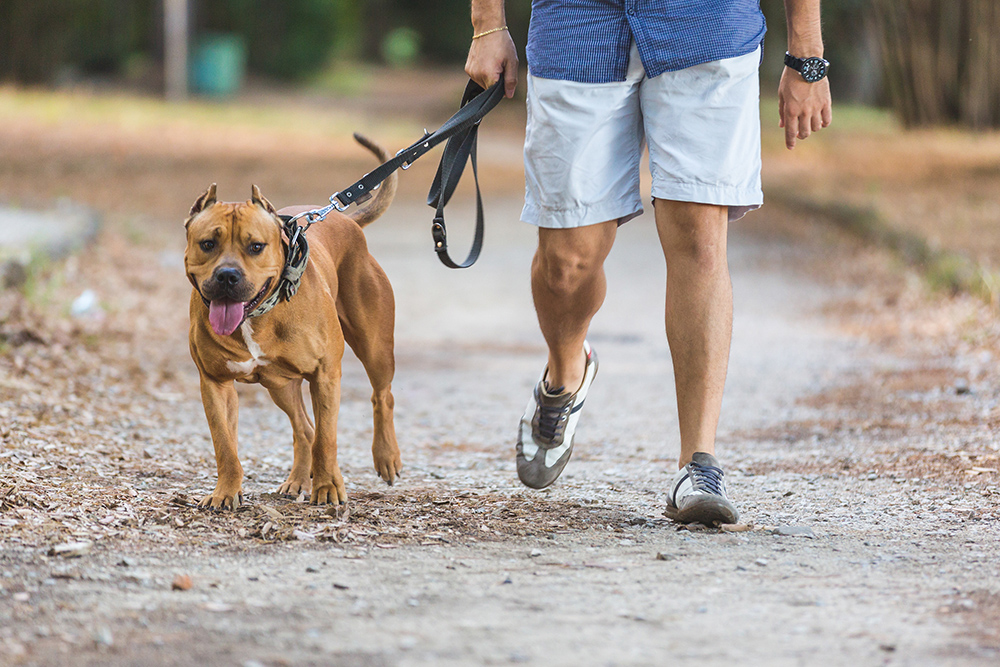By Heidi Clayton
Dogs pulling on leash walks is one of the biggest complaints I get from owners. I explain that it does not come naturally to a dog to wear a collar, to be tethered to you on a walk and to ignore all that is exciting to them out in the world.
While not every dog I breed actually ends up in the show ring, I train each one as if they will.
Show dogs are asked to ignore all of the other dogs around them and focus just on you while standing still and when moving, doing so at the correct speed without pulling you over. It is also quite unacceptable to use a prong collar, choke chain, or shock collar to gain their compliance, so training your dog is of vital importance.
Most of the dogs I train are not going to be show dogs, but just about every one of them is going to go for a walk at some point in their life. And on those walks, they won’t be able to play with every dog they see, not everyone will want to pet them, and you certainly won’t want them eating things found on the ground or sidewalk.
Training a dog to walk nicely is like a puzzle and you can only fit one piece of the puzzle together at time. Everyone who gets a puppy or new dog is under the assumption that walking on a leash comes naturally and doing so allows them to go to the end of the leash, walking out ahead of you like you don’t exist.
At about 3-5 months the puppy starts pulling like they are trying to win the Iditarod and then you start pulling back shouting, “no pulling” repeatedly, which only causes the dog to pull harder.
By allowing the dog to be out in front of you on the walk you have created a rule that it is okay to ignore you and that the world is not only more interesting, but more rewarding than you are. And in reality it is to a dog. Particularly if you use a flexi-lead. You are giving your dog the green light to pull you.
Every dog I train starts with being rewarded for checking in with me in the presence of distractions, with either a treat or praise. Next, I commit them to my left side and reward them for being next to me and walking at my pace. I practice at home or in my driveway before I start taking them to more stimulating locations.
When training a dog to walk nicely on a leash it is never about how far you go, but how good the walk is.
Don’t be afraid to practice leash walking in your driveway or backyard before you add distractions by walking through the neighborhood or going to a new place. When you are getting frustrated with your puppy or dog, end the walk. If you keep going they will feel your frustration travel down the lead, and in most cases, amp up their pulling to match your frustration.
Heidi Clayton started Four On the Floor Dog Training to provide positive, reward-based dog training in South Jersey. She breeds, trains and shows bull terriers under the SoraBully’s Bull Terriers kennel name. Email questions to heidi@fouronthefloordogtraining.net or learn more at https://fouronthefloordogtraining.net






